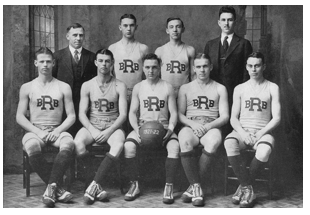- 3 degrees. To College 9-2:30. Student meeting at noon. Down street. Bowled at Star Alleys. Supper. Studied. Weather moderated greatly. Have cold in head. To bed at 9:30. [added] 5 states ratify amendment for prohibition. Total 30.
**********
The 18th amendment, otherwise known as Prohibition, is in the process of being ratified at this time. Here is a copy of the amendment, taken from a Wikipedia article:
Section 1. After one year from the ratification of this article the manufacture, sale, or transportation of intoxicating liquors within, the importation thereof into, or the exportation thereof from the United States and all the territory subject to the jurisdiction thereof for beverage purposes is hereby prohibited.
Section 2. The Congress and the several States shall have concurrent power to enforce this article by appropriate legislation.
Section 3. This article shall be inoperative unless it shall have been ratified as an amendment to the Constitution by the legislatures of the several States, as provided in the Constitution, within seven years from the date of the submission hereof to the States by the Congress.
Ratification by 36 states was required for the amendment to be ratified. Here is a list of the states and when they voted to ratify:
The following states ratified the amendment:
Mississippi (January 7, 1918)
Virginia (January 11, 1918)
Kentucky (January 14, 1918)
North Dakota (January 25, 1918)
South Carolina (January 29, 1918)
Maryland (February 13, 1918)
Montana (February 19, 1918)
Texas (March 4, 1918)
Delaware (March 18, 1918)
South Dakota (March 20, 1918)
Massachusetts (April 2, 1918)
Arizona (May 24, 1918)
Georgia (June 26, 1918)
Louisiana (August 3, 1918)
Florida (November 27, 1918)
Michigan (January 2, 1919)
Ohio (January 7, 1919)
Oklahoma (January 7, 1919)
Idaho (January 8, 1919)
Maine (January 8, 1919)
West Virginia (January 9, 1919)
California (January 13, 1919)
Tennessee (January 13, 1919)
Washington (January 13, 1919)
Arkansas (January 14, 1919)
Illinois (January 14, 1919)
Indiana (January 14, 1919)
Kansas (January 14, 1919)
Alabama (January 15, 1919)
Colorado (January 15, 1919)
Iowa (January 15, 1919)
New Hampshire (January 15, 1919)
Oregon (January 15, 1919)
North Carolina (January 16, 1919)
Utah (January 16, 1919)
Nebraska (January 16, 1919)
Missouri (January 16, 1919)
Wyoming (January 16, 1919)
Minnesota (January 17, 1919)
Wisconsin (January 17, 1919)
New Mexico (January 20, 1919)
Nevada (January 21, 1919)
New York (January 29, 1919)
Vermont (January 29, 1919)
Pennsylvania (February 25, 1919)
New Jersey (March 9, 1922)
The following states rejected the amendment:
Connecticut
Rhode Island





